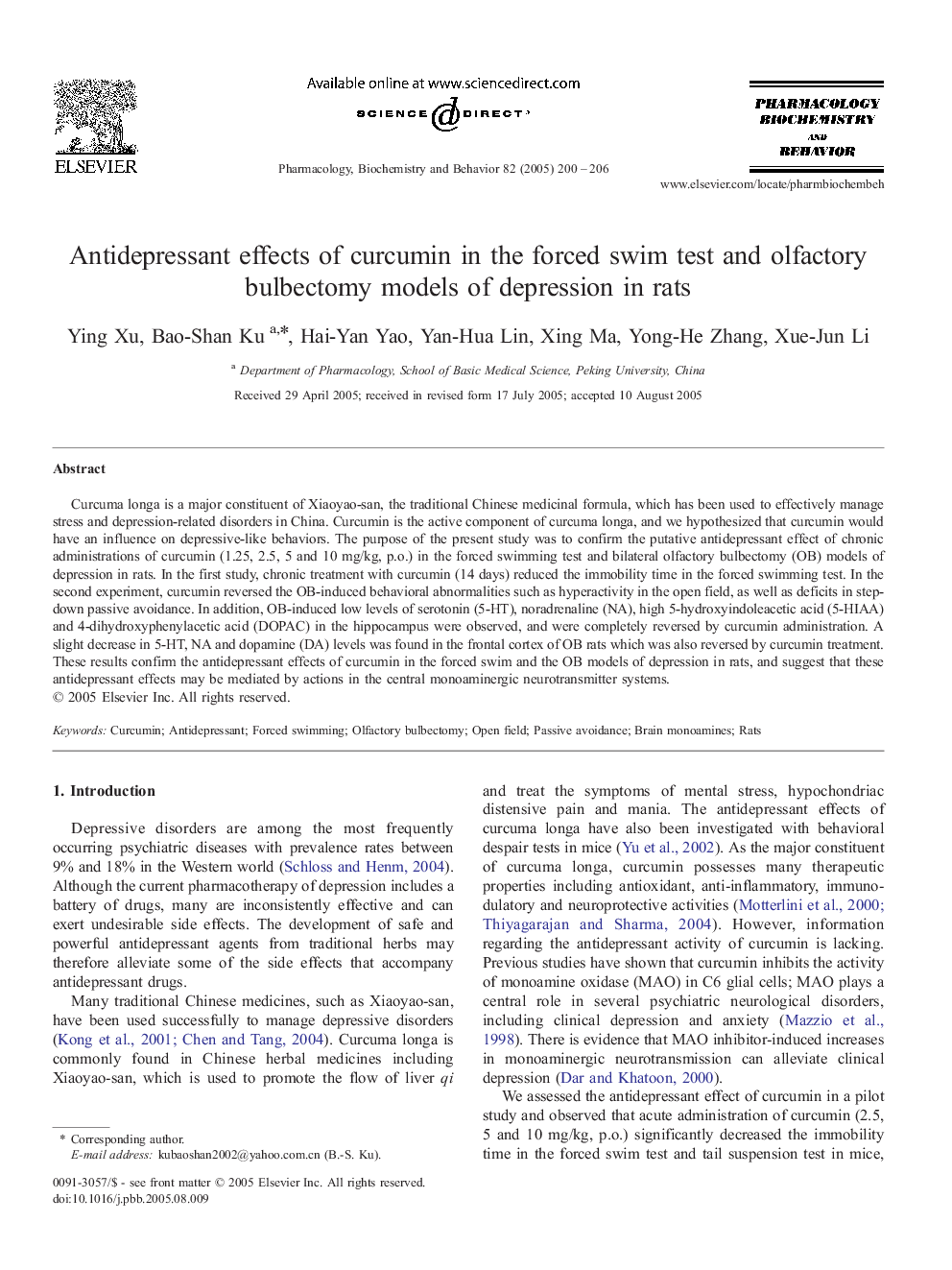| Article ID | Journal | Published Year | Pages | File Type |
|---|---|---|---|---|
| 10838378 | Pharmacology Biochemistry and Behavior | 2005 | 7 Pages |
Abstract
Curcuma longa is a major constituent of Xiaoyao-san, the traditional Chinese medicinal formula, which has been used to effectively manage stress and depression-related disorders in China. Curcumin is the active component of curcuma longa, and we hypothesized that curcumin would have an influence on depressive-like behaviors. The purpose of the present study was to confirm the putative antidepressant effect of chronic administrations of curcumin (1.25, 2.5, 5 and 10 mg/kg, p.o.) in the forced swimming test and bilateral olfactory bulbectomy (OB) models of depression in rats. In the first study, chronic treatment with curcumin (14 days) reduced the immobility time in the forced swimming test. In the second experiment, curcumin reversed the OB-induced behavioral abnormalities such as hyperactivity in the open field, as well as deficits in step-down passive avoidance. In addition, OB-induced low levels of serotonin (5-HT), noradrenaline (NA), high 5-hydroxyindoleacetic acid (5-HIAA) and 4-dihydroxyphenylacetic acid (DOPAC) in the hippocampus were observed, and were completely reversed by curcumin administration. A slight decrease in 5-HT, NA and dopamine (DA) levels was found in the frontal cortex of OB rats which was also reversed by curcumin treatment. These results confirm the antidepressant effects of curcumin in the forced swim and the OB models of depression in rats, and suggest that these antidepressant effects may be mediated by actions in the central monoaminergic neurotransmitter systems.
Keywords
Related Topics
Life Sciences
Biochemistry, Genetics and Molecular Biology
Biochemistry
Authors
Ying Xu, Bao-Shan Ku, Hai-Yan Yao, Yan-Hua Lin, Xing Ma, Yong-He Zhang, Xue-Jun Li,
